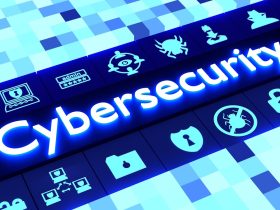Ransomware attacks have become a significant threat to businesses worldwide, with cybercriminals targeting organizations of all sizes to extort money by encrypting critical data. Protecting your company against ransomware requires a comprehensive approach that involves proactive measures, employee training, and robust incident response plans. This article outlines the essential steps to safeguard your organization from ransomware attacks.
Understanding Ransomware
Ransomware is a type of malicious software designed to block access to a computer system or data until a ransom is paid. It often spreads through phishing emails, malicious downloads, and exploit kits.
Key Characteristics:
- Encryption: Ransomware encrypts files, making them inaccessible without a decryption key.
- Ransom Demand: Attackers demand payment, usually in cryptocurrency, to provide the decryption key.
- Extortion: In some cases, attackers threaten to publish sensitive data if the ransom is not paid.
Essential Steps to Protect Against Ransomware
- Implement Strong Security Measures:
- Firewalls and Antivirus Software: Deploy advanced firewalls and antivirus solutions to detect and block ransomware.
- Regular Updates: Keep all software, including operating systems and applications, up to date with the latest security patches.
- Network Segmentation: Segment your network to limit the spread of ransomware if an attack occurs.
- Employee Training and Awareness:
- Phishing Awareness: Educate employees about the dangers of phishing emails and how to recognize suspicious messages.
- Safe Browsing Practices: Train staff on safe internet browsing habits and the importance of downloading software only from trusted sources.
- Incident Reporting: Encourage employees to report any unusual activity or potential security threats immediately.
- Regular Data Backups:
- Frequent Backups: Regularly back up critical data and ensure backups are stored in a secure, offline location.
- Backup Testing: Periodically test backups to ensure they can be restored successfully in the event of a ransomware attack.
- Backup Encryption: Encrypt backup data to protect it from unauthorized access.
- Restrict Access and Privileges:
- Least Privilege Principle: Limit user access to only the information and systems necessary for their job roles.
- Multi-Factor Authentication (MFA): Implement MFA to add an extra layer of security for accessing sensitive systems and data.
- Regular Access Audits: Conduct regular audits to review and adjust user permissions as needed.
- Develop an Incident Response Plan:
- Response Team: Establish a dedicated incident response team with clearly defined roles and responsibilities.
- Detection and Containment: Implement procedures for quickly detecting and containing ransomware infections.
- Communication Plan: Develop a communication strategy to inform stakeholders, employees, and customers about the incident and ongoing efforts to resolve it.
- Utilize Advanced Security Technologies:
- Endpoint Detection and Response (EDR): Use EDR solutions to monitor and respond to threats on endpoint devices.
- Threat Intelligence: Leverage threat intelligence to stay informed about the latest ransomware trends and attack methods.
- Behavioral Analytics: Implement behavioral analytics to identify unusual activities that may indicate a ransomware attack.
Conclusion
Protecting your company against ransomware requires a multi-faceted approach that combines strong security measures, employee training, regular backups, and a well-defined incident response plan. By taking these proactive steps, you can reduce the risk of ransomware attacks and minimize the potential impact on your business.
Source of the news: Built In
















Got a Questions?
Find us on Socials or Contact us and we’ll get back to you as soon as possible.